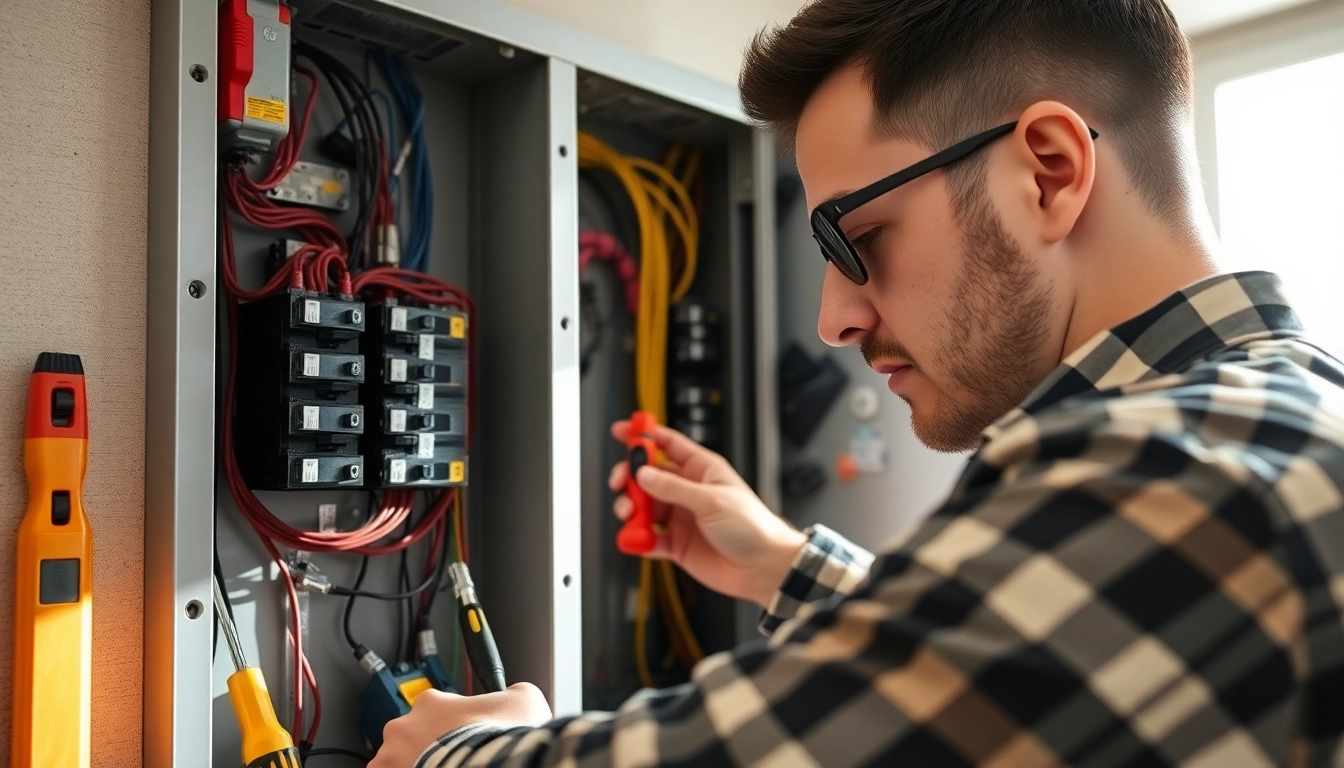What is an Electrical Panel Upgrade?
Definition and Importance
An Electrical Panel Upgrade involves replacing or enhancing the existing electrical panel in a home or commercial property to improve its capacity, safety, and functionality. This essential system serves as the heart of any electrical installation, distributing electricity to various circuits throughout the building. Given the increasing reliance on electrical devices—not to mention the rise in renewable energy sources—understanding when and why to upgrade your electrical panel is crucial for both safety and efficiency.
Signs You Need an Upgrade
Recognizing when your electrical panel is due for an upgrade can prevent dangers such as fire hazards or electrical failures. Here are some clear signs indicating the need for an upgrade:
- Inadequate Amperage: Most modern homes require a 200-amp service due to various electrical devices and appliances. If your home is still operating on a 100-amp service, it may be time for an upgrade.
- Frequent Breaker Trips: If circuits frequently trip, this indicates overloading, which points to inadequate capacity for your electricity needs.
- Flickering Lights: Fluctuations in lighting often suggest issues within the electrical panel that could diminish your electrical systems’ overall reliability.
- Old Age of Panel: Many older panels, particularly those over 30 years, may not meet current safety standards or accommodate modern electrical loads.
- Corrosion or Damage: Visible wear, rust spots, and corrosion can compromise the panel’s functionality and signify urgent upgrades.
Benefits of Upgrading Your Electrical Panel
Upgrading your electrical panel comes with a multitude of benefits:
- Increased Capacity: Capturing modern electrical loads effectively ensures that all devices operate safely simultaneously.
- Enhanced Safety: Newer panels are designed with current safety standards and come equipped with better circuit breakers and protection systems to minimize fire risks.
- Improved Resale Value: A modern electrical panel is attractive to potential buyers, directly impacting the overall value of your home.
- Future-Proofing: An upgraded panel can accommodate future expansions, such as installing electric car chargers or adding additional circuits.
- Lower Insurance Premiums: Some insurance companies may offer incentives for updated electrical systems, as they pose lower risks.
The Cost of an Electrical Panel Upgrade
Understanding Pricing Factors
The cost of upgrading an electrical panel can vary significantly based on several factors:
- Labor Costs: Electricians typically charge between $50 to $120 per hour depending on their expertise and the scope of the work.
- Panel Type: The type of panel being installed can greatly influence costs, from basic models to more advanced options. Standard panels can range between $100 and $500, while specialized equipment can be significantly higher.
- Complexity of the Upgrade: If your home requires additional wiring or new circuit installation, costs can escalate quickly.
- Permit and Inspection Fees: Many regions require permits for electrical work which can add to total expenses.
Average Costs Across Different Regions
Costs can differ based on geographical location, primarily due to labor rates and local market conditions. Here are some average costs observed across various regions in the U.S. as of 2023:
- West Coast: $1,500 to $3,500
- Midwest: $800 to $2,800
- Southern States: $1,000 to $3,000
- Northeast: $1,200 to $4,000
These figures represent common range estimates but can vary based on specific conditions and needs.
Budgeting for Unexpected Expenses
When planning for an electrical panel upgrade, it’s prudent to budget an extra 15-20% for unexpected costs. These may arise if structural changes are needed to accommodate the new panel, issues found during the inspection, or unforeseen permitting requirements.
Steps to Prepare for a Panel Upgrade
Assessing Your Current Electrical Needs
The first step in preparing for an upgrade is to evaluate your current and future electrical needs. Consider the number of devices and appliances that will draw power concurrently. A comprehensive assessment might involve:
- Cataloging all existing appliances and their power demands.
- Considering future changes, such as adding more square footage or upgrading to electric vehicle charging stations.
- Consulting with an electrician to discuss potential upgrades based on current power requirements.
Choosing the Right Professional
Selecting a qualified electrician is crucial to ensure safe and effective installation. When selecting a contractor, consider the following:
- Licensing and Certifications: Ensure they possess the relevant state licenses and are certified to work on residential systems.
- Experience: Look for an electrician with substantial experience in panel upgrades specifically.
- References and Reviews: Seek recommendations and check online reviews to gauge customers’ satisfaction.
- Estimates: Gather multiple estimates to compare pricing and scope of work offered.
Permits and Regulations
Before an upgrade, it’s essential to obtain necessary permits and adhere to local regulations. This often involves the following:
- Checking local building codes that dictate requirements for electrical panel upgrades.
- Filing for permits, which may involve inspections before and after installation.
Special Considerations for Upgrading
Compatibility with Existing Systems
One of the primary considerations in an electrical panel upgrade is ensuring compatibility with existing wiring and devices. During the upgrade process:
- An electrician will evaluate existing circuits to confirm that they can be incorporated into the new panel.
- Older homes may have wiring systems that require updates or replacements to meet current standards.
Impact on Home Insurance
Performing an electrical panel upgrade may positively impact your home insurance premium. It’s advisable to notify your insurance provider about the upgrade:
- Updating your policy can prevent complications in case of a claim related to electrical issues.
- Some providers may offer lower premiums as newer panels reduce the risk of electrical fires and other hazards.
Tax Credits and Incentives
Upgrading your electrical panel may also make you eligible for tax credits or rebates. Be sure to:
- Consult IRS guidelines or local government incentives that could offset costs. For example, ENERGY STAR provides information on potential rebates for energy-efficient upgrades.
- Check any local energy provider options; some may offer rebates for installing specific energy-efficient devices.
Post-Upgrade: What to Expect
Inspections and Follow-Up
After the installation of a new panel, inspections are usually required to ensure everything is compliant with local codes. These may include:
- Initial inspections conducted by a city or county inspector.
- Follow-ups to assess performance and safety of newly installed systems.
Adjusting to Your New System
Post-upgrade, homeowners may need a brief adjustment period:
- Familiarizing yourself with the new panel layout and understanding which circuits control specific areas of your home.
- Developing a routine for periodic checks to ensure everything operates smoothly.
Maintaining Your Electrical Panel
Ongoing maintenance of your electrical panel is essential for safety and longevity. This includes:
- Regular visual inspections for signs of corrosion or damage.
- Keeping the area around the panel clear and dust-free.
- Scheduling periodic professional inspections to catch any issues early.
In conclusion, upgrading your electrical panel is an investment in both safety and efficiency, essential for meeting current and future electrical demands. Understanding the signs prompting an upgrade, the staging and steps involved, and the benefits from such an upgrade can empower homeowners to make informed decisions.



